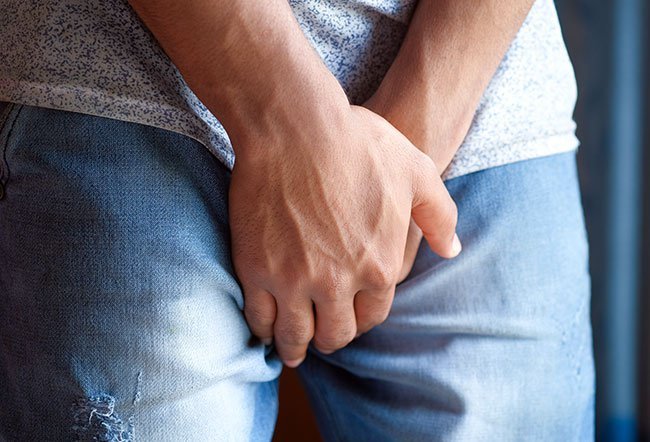What Are the Symptoms of Pruritus Scroti?
What is pruritus scroti?

Pruritus scroti is a common condition characterized by scrotal itching (the skin sac containing the testicles). The condition may occur due to infections, systemic inflammatory disorders, worm infestations, allergies, and tumors. The crotch is warm and moist, which is prone to fungal and bacterial infections and rashes. Also, jock itch (also called tinea cruris), scrotal eczema, allergic reactions, and sexually transmitted infections (STI) are common causes of scrotal itching in many men.
Scrotal itching can be associated with itching in other parts of the body and other systemic signs and symptoms. Laboratory investigations, bacterial and fungal culture, skin biopsy, etc., may be required to diagnose the cause. Treatment involves treating the cause, symptomatic relief, and lifestyle modifications.
What are pruritus scroti signs and symptoms?
Pruritus can affect any part of the body. Pruritus scroti is itching of the scrotum and may not occur with any other noticeable changes on the skin or be associated with the following:
- Redness or discoloration
- Burning
- Raised skin
- Bumps, spots, or blisters
- Extremely dry skin
- Cracked skin
- Leathery or scaly patches
- Skin that oozes fluid and develops blisters filled with clear fluid
When to see a doctor
It is recommended to see a doctor in the following cases:
- Pruritus that lasts longer than 2 weeks and doesn't improve with home remedies or over-the-counter medications
- Pruritus that interferes with daily routine or affects sleep
- Pruritus begins suddenly and cannot be easily explained
- Affects the entire body
- Pruritus associated with systemic signs and symptoms, such as weight loss, fever, night sweats, yellow discoloration of eyes or skin, or dark-colored urine
What causes pruritus scroti?
Causes of pruritus scroti include the following:
- Skin conditions: xerosis (dry skin), eczema (dermatitis), fungal infections, scabies, psoriasis, parasites, burns, scars, insect bites, hives, etc.
- Underlying diseases: Pruritus on the body might be a symptom of an underlying illness, such as anemia, diabetes, liver disease, kidney disease, thyroid problems, multiple myeloma, or lymphoma.
- Neurological disorders: multiple sclerosis, pinched nerves, and shingles (herpes zoster)
- Psychiatric conditions: anxiety, obsessive-compulsive disorder, tactile hallucinations, and depression
- Irritation and allergic reactions: Irritation to things, such as wool, chemicals, soaps, cosmetics, and other substances, can irritate the skin and cause rashes and itching.
What are diagnostic tests for pruritus?
The doctor would perform a complete physical exam and may suggest the following:
- Blood tests, such as complete blood count
- Tests for thyroid, liver, and kidney function
- Chest X-ray
What are treatments for pruritus scroti?
Treatment options include the following:
- Corticosteroid creams and ointments: These can reduce inflammation, itching, and redness. The ointments may contain 0.025%-0.1% corticosteroid. It is advised not to use steroid creams for more than 7 days because steroids can cause the skin to thin out. They can also increase the chances of fungal infection in the irritated area.
- Other creams and ointments: Other topical treatments include calcineurin inhibitors that provide relief.
- Oral medications: Medications would include anti-itching medications, antibiotics, or antidepressants depending on the cause.
- Light therapy (phototherapy): Phototherapy uses a specific type of light to control the sensation of itching.
Are there lifestyle and home remedies for pruritus scroti?
The following measures can temporarily relieve itching:
- Avoid irritants.
- Manage stress.
- Use over-the-counter oral allergy medicine, such as diphenhydramine.
- Use a mild, fragrance-free moisturizer to relieve dry skin.
- Use creams, lotions, or gels that soothe and cool the skin. Some nonprescription corticosteroid creams include calamine lotion or creams with menthol, camphor, capsaicin, or a topical anesthetic, such as pramoxine (for adults only).
- Avoid scratching by covering the itchy areas.
- Wear loose-fitting, breathable cotton underwear and pants.
- Take a bath with lukewarm water and about half a cup (100 grams) of Epsom salts, baking soda, or oatmeal-based bath products.
- Use a mild cleanser.
- Get adequate rest, hydration, and follow a healthy diet.

